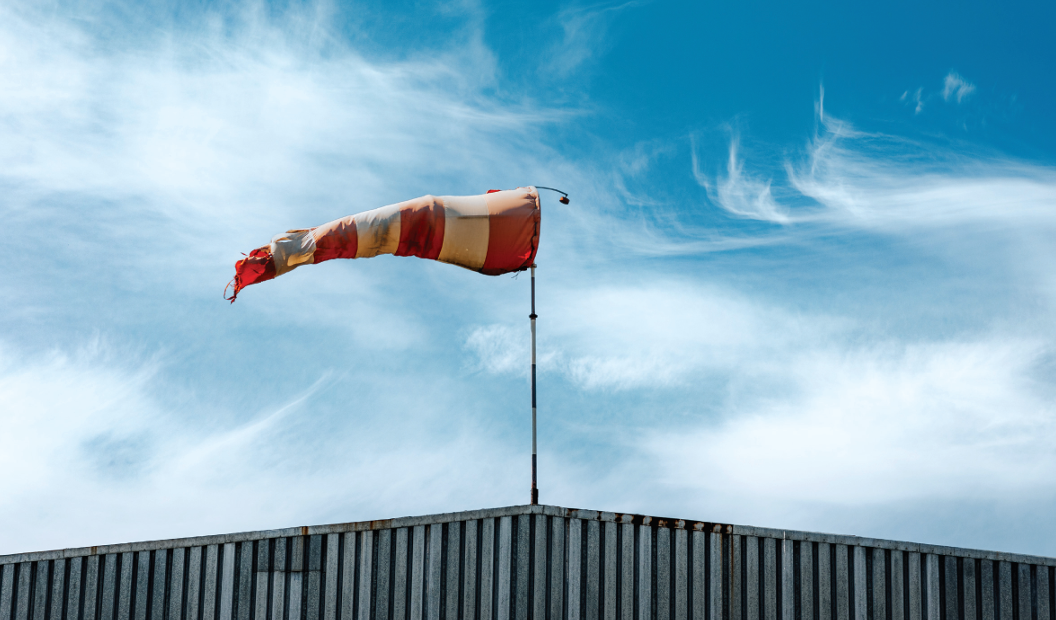
The Debate Over Crosswind Landings in Aviation
One of the most contentious topics in aviation is how to handle crosswind landings, especially under challenging conditions like strong winds, rain, or turbulence. Pilots often engage in lively discussions about the safest and most effective techniques for these situations. Including pilots who fly large aircraft and those who operate taildraggers can make the conversation even more dynamic.
As a pilot with experience in various aircraft, my preferred method for crosswind landings is the slip technique. In this approach, I lower the upwind wing on final approach to counteract the wind's drift while simultaneously applying enough opposite rudder to keep the nose aligned with the runway centerline. This is essentially a side slip, but the sideways movement is minimized due to the wind’s counteracting force. I maintain these control inputs throughout the landing, touching down first on the upwind wheel while keeping the correction active until the downwind wheel makes contact.
Once on the ground, I don’t relax the controls. Instead, I apply full upwind aileron and maintain the necessary opposite rudder pressure to keep the aircraft straight down the runway. These adjustments usually become more pronounced as the aircraft slows, but there are no side loads on the landing gear, which is an advantage of this technique.
This method requires practice, especially in strong, gusty conditions where control pressures can change rapidly. As an inspector and examiner, I’ve always valued pilots who can manage crosswinds effectively. If it’s my own landing, I consider it a success if I can taxi into the hangar without feeling overly stressed.
However, many pilots prefer the crabbing method, which is commonly seen in large transport airplanes during crosswind landings. With this technique, the aircraft is angled into the wind to track along the runway centerline. At the moment of touchdown, the pilot lowers the upwind wing and applies opposite rudder to align the aircraft with the runway.
Large commercial aircraft are designed to handle the stress of landing "sideways" because their landing gear can absorb the loads, and they land at higher speeds, reducing the impact of crosswinds. Some Boeing models, such as the 777 and 787, are even authorized to land with the crab angle still in place. The B-52 bomber was specifically designed with crosswind capabilities, and the Cessna 195 had a unique design that allowed it to land in a crab without cross-control. The Ercoupe, which couldn't be cross-controlled, would simply land in a crab and straighten itself out on the runway.
Despite these advantages, some pilots believe that landing sideways invites unnecessary risk. A retired captain once suggested trying the crab-to-slip transition just before touchdown, claiming it might be easier than expected. However, another 777 captain disagreed, stating, “It's just not right!”
Before attempting any significant crosswind landing, pilots must consult crosswind component charts and check the maximum demonstrated crosswind in their operating handbook. It’s important to note that this figure is “demonstrated” rather than a strict limitation, though experienced pilots may push the boundaries.
While the techniques are well-known, neither method will work unless practiced. Pilots should consider working with an instructor or coach to refine their skills. If conditions are too severe, it may be safer to choose a different airport with a runway aligned with the wind.
A Personal Experience with Crosswind Challenges
I recall a late April morning when I flew my J-3 Cub (N70906) early in the day to forage for morel mushrooms near Peebles, Ohio. My friend Richard Roberts owned a dairy farm in the area, and the hayfield was ideal for small aircraft like the Cub. I left Lunken Airport (KLUK) before the tower opened, using only a flashlight in my mouth. I had a 5-gallon can of gas secured in the front seat and a .22 rifle strapped to a strut. I took off from what had been a runway (15-33) but was now a taxiway.
I wasn’t sure about the legality of the operation, but I forgot to investigate further. After a pleasant day in the country, we filled the tank with 100-octane gas, and I headed back toward Cincinnati. The weather was nice, but the air was rough, and surface winds had picked up significantly since the morning. Lunken reported winds of 330 degrees at 15 knots with gusts up to 25. Landing on Runway 25 would mean an 80-degree crosswind.
A King Air on final struggled and eventually missed the landing. I tried twice before requesting to land on taxiway A (330 degrees). The tower refused, but I persisted, even using the phrase “pilot’s discretion,” which wasn’t appropriate. Finally, the controller asked if I was declaring an emergency, and I said yes. I then landed on taxiway alpha, rolling out within 200 feet of the turnoff into my hangar.
Nothing came of the incident, but I later spoke with the tower about the pilot-in-command responsibilities under ICAO rules. The pilot in command is responsible for the aircraft’s operation, except in emergencies where deviations are necessary for safety.
I gave my friend the squirrels, but the morels were delicious.
